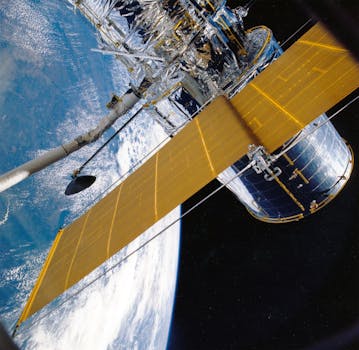GEO Satellites: Unlocking the Potential of Geostationary Orbit

GEO Satellites: Unlocking the Potential of Geostationary Orbit
GEO satellites, or geostationary satellites, are a type of satellite that orbits the Earth at an altitude of approximately 36,000 kilometers, allowing them to remain stationary in relation to a specific point on the equator. This unique characteristic makes GEO satellites an essential component of modern telecommunications, as they provide a wide range of benefits and applications. In this article, we will delve into the world of GEO satellites and explore their potential, applications, and impact on the future of satellite technology.
What are GEO Satellites?
GEO satellites are designed to operate in the geostationary orbit, which is a circular orbit around the Earth at an altitude of approximately 36,000 kilometers. At this altitude, the satellite’s orbital period matches the Earth’s rotational period, allowing it to remain stationary in relation to a specific point on the equator. This means that a GEO satellite can provide continuous coverage of a specific region, making it ideal for applications such as telecommunications, weather forecasting, and navigation.
Applications of GEO Satellites
GEO satellites have a wide range of applications, including telecommunications, weather forecasting, navigation, and Earth observation. In the field of telecommunications, GEO satellites are used to provide broadband internet, television broadcasting, and mobile communications. They are also used for weather forecasting, providing images of cloud patterns, storm systems, and other weather phenomena. Additionally, GEO satellites are used for navigation, providing location information and timing signals for GPS and other navigation systems.
Benefits of GEO Satellites
The benefits of GEO satellites are numerous, including global coverage, high bandwidth, and low latency. GEO satellites can provide coverage of entire continents, making them ideal for applications such as telecommunications and weather forecasting. They also offer high bandwidth, allowing for the transmission of large amounts of data, and low latency, making them suitable for real-time applications such as video conferencing and online gaming.
Future of GEO Satellites
The future of GEO satellites is promising, with advancements in technology and the increasing demand for satellite-based services driving growth and innovation. Next-generation GEO satellites will offer even higher bandwidth, lower latency, and greater flexibility, enabling new applications such as 5G networks and the Internet of Things (IoT). Additionally, the development of new launch vehicles and satellite platforms will make it easier and more cost-effective to launch and operate GEO satellites, further expanding their potential and applications.
